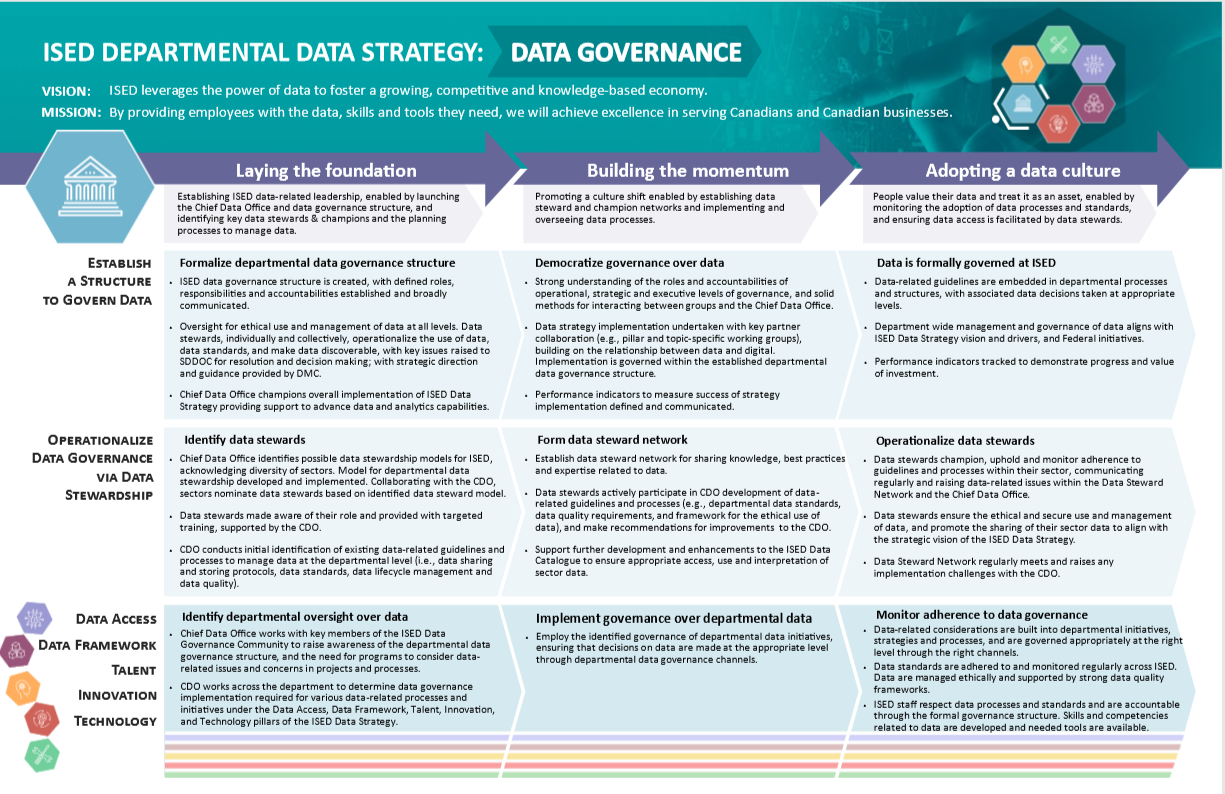Important: The GCConnex decommission will not affect GCCollab or GCWiki. Thank you and happy collaborating!
Difference between revisions of "Data Governance Pillar"
Jump to navigation
Jump to search
| Line 3: | Line 3: | ||
[[File:DataGovENG.png|alt=ISED Data Strategy|center|frameless|1300x1300px]] | [[File:DataGovENG.png|alt=ISED Data Strategy|center|frameless|1300x1300px]] | ||
| + | == Data Governance Pillar == | ||
Strong data governance is foundational to developing an ISED data culture that treats data as a strategic asset. Data governance means having data-related leadership, with clearly defined roles, responsibilities and accountabilities with decision-making authority within a structure to govern data. Data standards for quality and metadata, as well as data management processes throughout the data lifecycle are also critical components of data governance. | Strong data governance is foundational to developing an ISED data culture that treats data as a strategic asset. Data governance means having data-related leadership, with clearly defined roles, responsibilities and accountabilities with decision-making authority within a structure to govern data. Data standards for quality and metadata, as well as data management processes throughout the data lifecycle are also critical components of data governance. | ||
| + | |||
| + | == Data Governance Placemat == | ||
| + | [[File:DataGovPlacematimage.png|left|thumb| | ||
| + | Data Governance Placemat | ||
| + | ]] | ||
Revision as of 09:26, 21 December 2020
(Français: Pilier de la gouvernance des données)
Data Governance Pillar
Strong data governance is foundational to developing an ISED data culture that treats data as a strategic asset. Data governance means having data-related leadership, with clearly defined roles, responsibilities and accountabilities with decision-making authority within a structure to govern data. Data standards for quality and metadata, as well as data management processes throughout the data lifecycle are also critical components of data governance.


